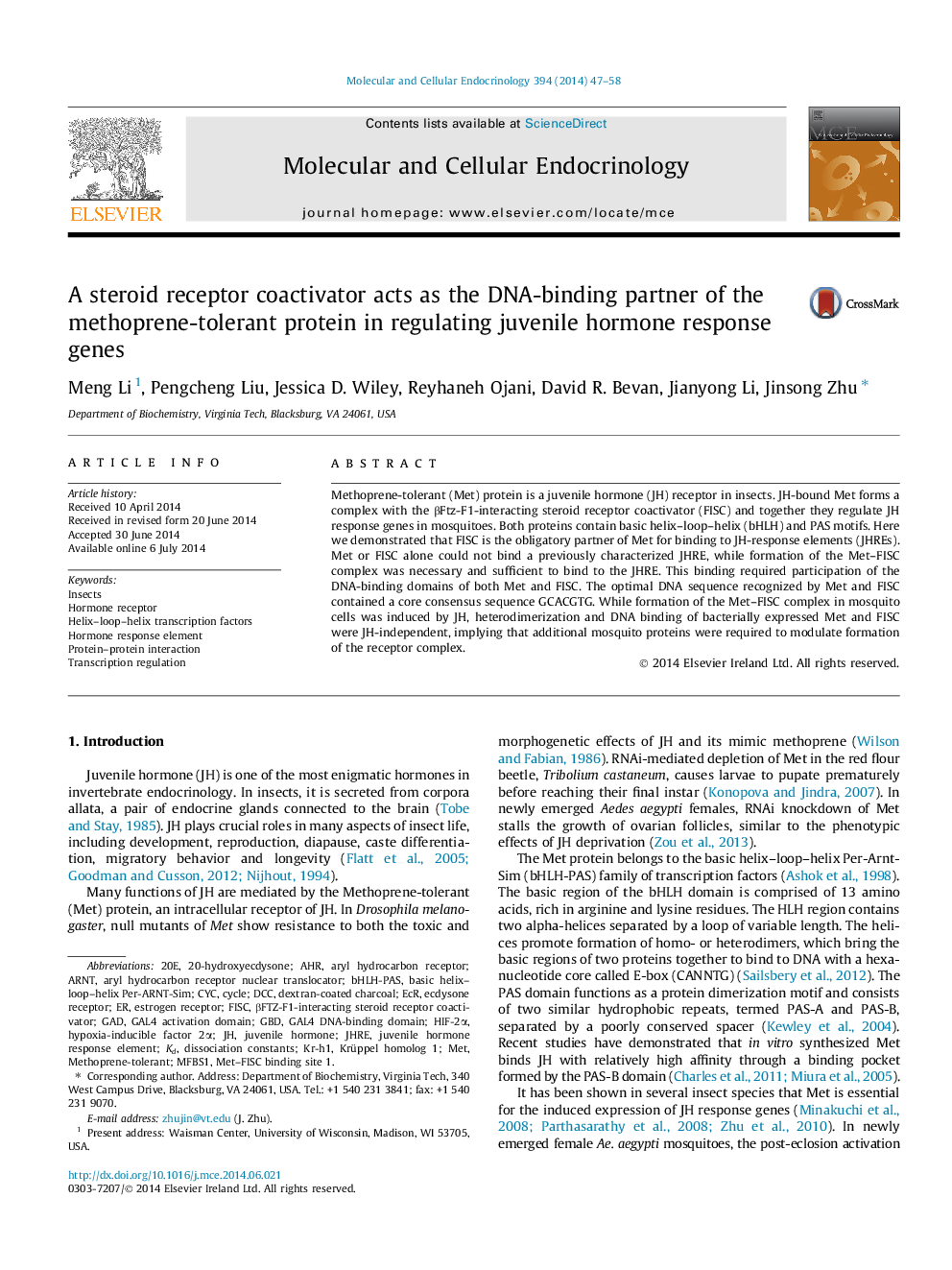| Article ID | Journal | Published Year | Pages | File Type |
|---|---|---|---|---|
| 2195931 | Molecular and Cellular Endocrinology | 2014 | 12 Pages |
•The p160 coactivator FISC is a DNA-binding partner of the juvenile hormone receptor Met.•Binding to juvenile hormone response elements requires intact DNA-binding domains of Met and FISC.•Met and FISC are sufficient to bind to a consensus motif GCACGTG.•This study reveals mechanistic details in a key step in signal transduction of juvenile hormone.
Methoprene-tolerant (Met) protein is a juvenile hormone (JH) receptor in insects. JH-bound Met forms a complex with the βFtz-F1-interacting steroid receptor coactivator (FISC) and together they regulate JH response genes in mosquitoes. Both proteins contain basic helix–loop–helix (bHLH) and PAS motifs. Here we demonstrated that FISC is the obligatory partner of Met for binding to JH-response elements (JHREs). Met or FISC alone could not bind a previously characterized JHRE, while formation of the Met–FISC complex was necessary and sufficient to bind to the JHRE. This binding required participation of the DNA-binding domains of both Met and FISC. The optimal DNA sequence recognized by Met and FISC contained a core consensus sequence GCACGTG. While formation of the Met–FISC complex in mosquito cells was induced by JH, heterodimerization and DNA binding of bacterially expressed Met and FISC were JH-independent, implying that additional mosquito proteins were required to modulate formation of the receptor complex.
